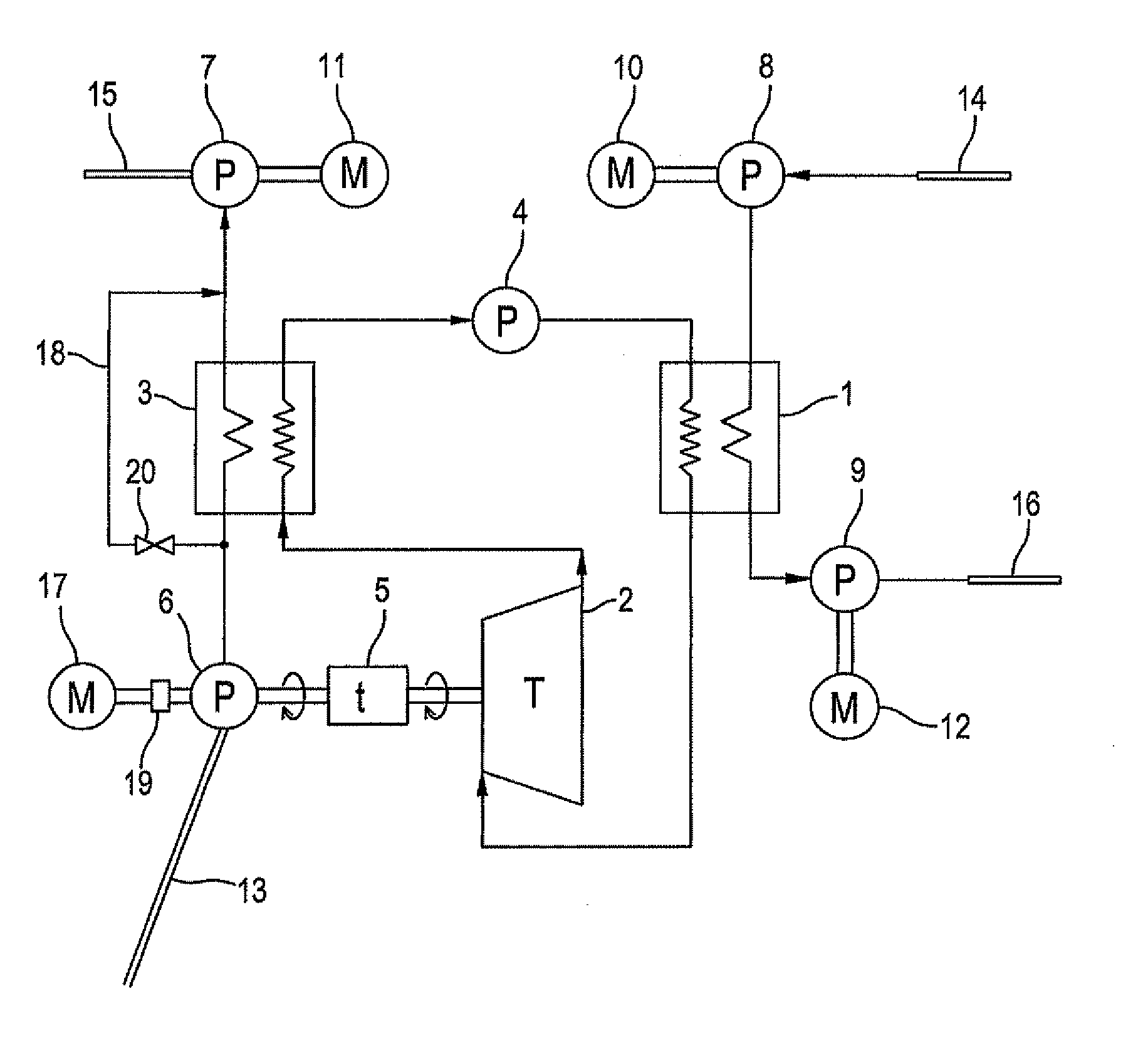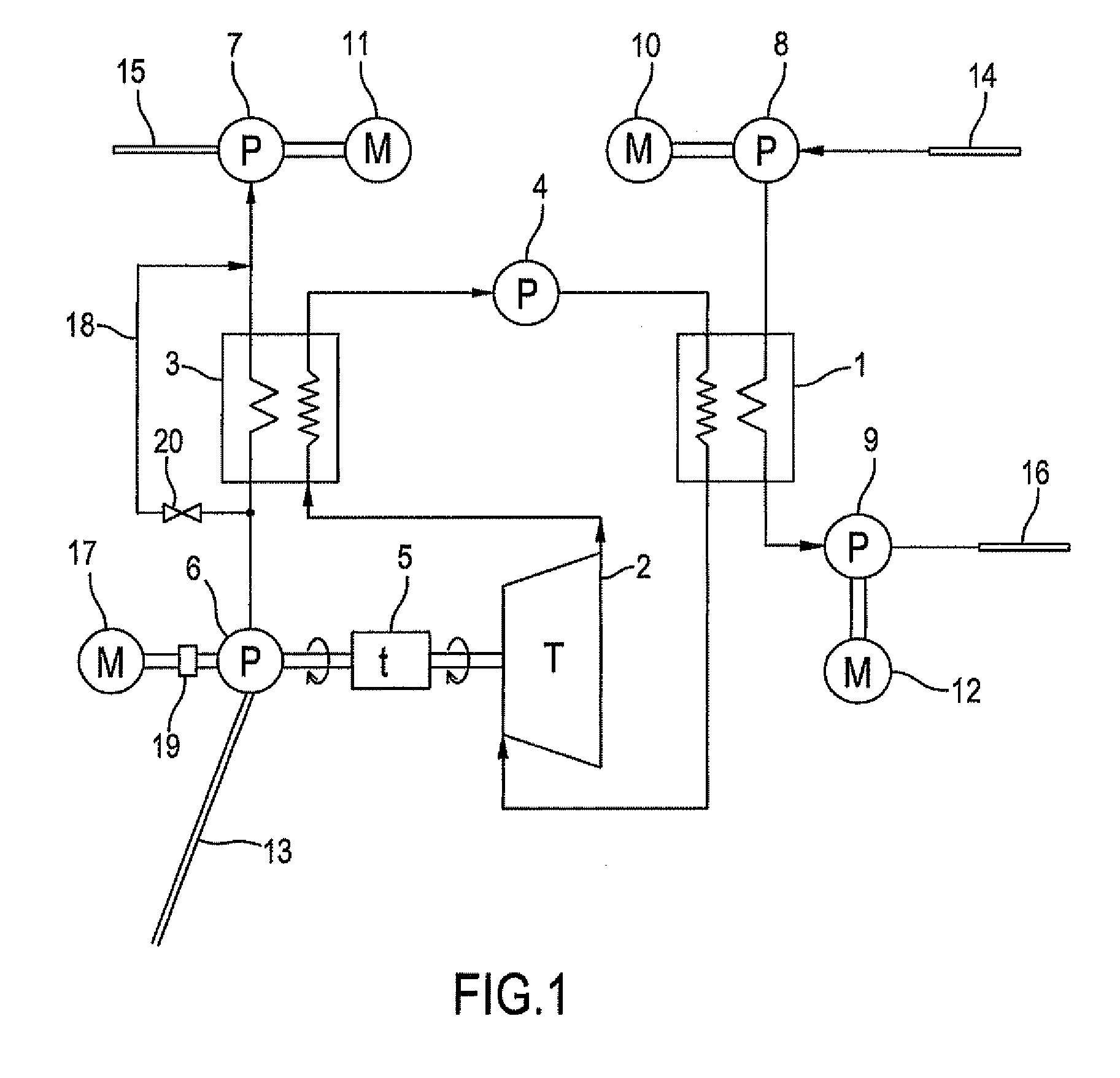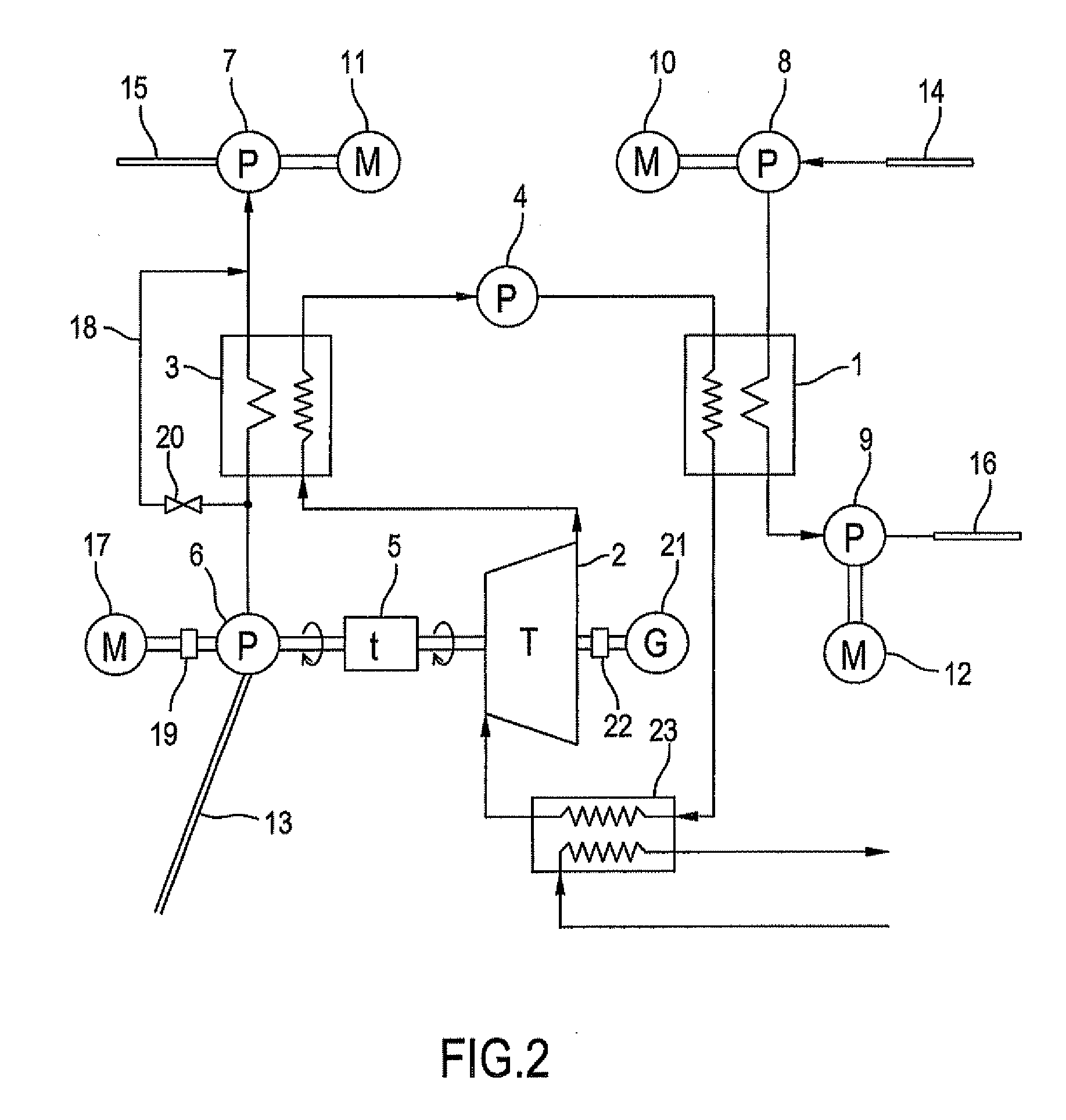Sea surface cooling system utilizing otec
a technology of sea surface cooling and otec, which is applied in the direction of sea energy generation, mechanical equipment, machines/engines, etc., can solve the problems of low conversion efficiency, low energy conversion efficiency of power generation plants utilizing otec, and inability to achieve significant improvement in efficiency, etc., to achieve the effect of lowering energy conversion efficiency, abundance of energy resources, and low conversion efficiency
- Summary
- Abstract
- Description
- Claims
- Application Information
AI Technical Summary
Benefits of technology
Problems solved by technology
Method used
Image
Examples
first embodiment
[0121]FIG. 1 is a functional block diagram showing a construction of the sea surface cooling system according to the first embodiment of the present invention. In the figure, reference number 1 denotes an evaporator, 2 a turbine, 3 a condenser, 4 a circulation pump, 5 a transmission for rotary power, 6 a deep seawater draw pump, 7 and 9 drain pumps, 8 a surface seawater draw pump, 10, 11, and 12 electric motors, 13 a deep seawater draw pipe, 14 a surface seawater draw pipe, 15 a deep seawater drainpipe, 16 a surface seawater drainpipe, 17 a starter motor, 18 a bypass pipe, 19 a coupling / decoupling unit, and 20 a stop valve.
[0122]Although many of the elements are shown in a singular form, they may actually consist of a plurality of the same elements of a smaller size that are connected in parallel or in cascade and work in synchronization with each other.
[0123]The sea surface cooling system shown in FIG. 1 is a modification of a typical closed-cycle OTEC power plant utilizing a worki...
second embodiment
[0167]FIG. 2 is a block diagram showing a sea surface cooling system according to a second embodiment of the present invention. In FIG. 2, elements denoted by the same reference numbers used in FIG. 1 are the same elements as those denoted by the corresponding reference numbers and were already explained while referring to FIG. 1. Therefore, a duplicate explanation for these elements will be omitted. In the second embodiment, a generator 21 is newly installed and is coupled to the other end of turbine 2 through a coupling / decoupling unit 22.
[0168]A condensation-type solar power generating system employing a solar battery is constructed nearby. An example of this type of solar power generating system is disclosed in the preceding patent application US20100018567 by the present inventor. This system includes a two-dimensional reflector to condense solar energy on the solar cells located along its focal line, and means for discharging hot drainage, which was used to cool the solar cell...
PUM
 Login to View More
Login to View More Abstract
Description
Claims
Application Information
 Login to View More
Login to View More - R&D
- Intellectual Property
- Life Sciences
- Materials
- Tech Scout
- Unparalleled Data Quality
- Higher Quality Content
- 60% Fewer Hallucinations
Browse by: Latest US Patents, China's latest patents, Technical Efficacy Thesaurus, Application Domain, Technology Topic, Popular Technical Reports.
© 2025 PatSnap. All rights reserved.Legal|Privacy policy|Modern Slavery Act Transparency Statement|Sitemap|About US| Contact US: help@patsnap.com



